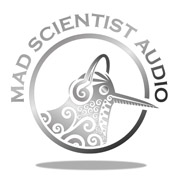How We Blind Test CanOpeners
When I first discovered the principle behind BlackDiscus, I was hugely sceptical. After all, here was something that really should not work. I spent several weeks testing the effect and then I decided that I needed to Blind Test them to really prove to myself that these things are real.
Blind testing has a bad name in audiophile-land. I think the main reason is that it exposes too many unfortunate truths - namely that a lot of things just don't do what they claim. Of course, audiophiles claim that blind testing introduces too much stress into the test and thus it's invalid.
Having done more blind testing than most people, I can see both sides, but I tend to go with the scientific idea that blind testing is good. But in reality, I don't get very different results when sighted and blind testing.
Since that first blind test (which of course I passed, or you would not be reading this), I have conducted several tests. If I call them "double blind" I am sure that someone will argue with me. But they are double blind in the sense that neither the person conducting the test or the person under test knows the identity of the device(s) being auditioned.
In this example, we will blind test a single BlackDiscus. To do this, we first create a dummy BlackDiscus that is inactive as it has not been through the vital processing stage. Thus is looks the same, feels the same and weighs the same, but it's been marked to identify as a dummy (it's even made from the exact same material).
So we have one real and one dummy BlackDiscus. Now this is made somewhat easier by virtue of the fact that BlackDiscus work fine if they are inside an envelope.
Here's how we do it:
1. We get an assistant (who is otherwise
not involved) to place the real and dummy
BlackDiscus into envelopes and seal them. They are
then placed in the test room.
2.
Now the test conductor mixes the envelopes. So does
the test subject (both out of sight of each other
doing this). Then the conductor marks the envelopes
A and B, folds them up and tapes them to facilitate
attaching to headphones.
3. At this
stage, neither the tester or testee knows which
envelope contains the real BlackDiscus.
4. The tester explains how to attach the
BlackDiscus, how to put the one that's not being
tested in a small tin, how to play music on the
system.
5. It's then up to the test
subject to listen to the two different envelopes
(which are placed on the headphone's jack plug) and
make their decision as to which is which is the real
BlackDiscus. The tester remains to ensure that the
test subject doesn't try to cheat.
I have personally been tested more than a dozen times and easily passed them all. I've also tested others. So far nobody has failed to detect the real BlackDiscus. In fact, most subjects say that it was very easy, and take less than 10 minutes to complete the test.
I've done blind testing of Interconnects before, (including one test where the so-called scientist running the test decided to mess with the data to further his own beliefs) and I can tell you that it's much harder to pick interconnects blind. It's possible, but requires a lot more than 10 minutes. Or it does for me at least. But when I blind test BlackDiscus I can pick it almost instantly. Sometimes, if I happen to choose the dummy to listen to first, I say to myself "it's the other one"
I invite others to try blind testing
BlackDiscus - I think you will confirm what I see
when I blind test them.
See the instructions here.



